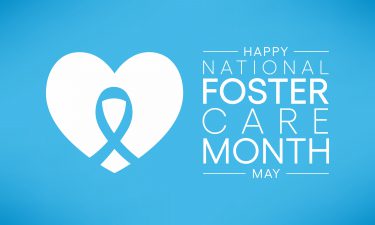Fostering teens brings great joy to parents

BATAVIA, OH — When Danielle and Danny of Batavia became foster parents in September 2019, they wanted young children.
“If someone would have said next year you’ll have four teens, I would have laughed,” Danielle said.
But, to their amazement, they came to find fostering teens to their liking. They are in the process of adopting a 13-year-old, who has been with them since January 2020. Their home also includes a 16-year-old foster child, a 13-year-old foster child and daughter Ryan, 11, their only biological child.
Danielle’s parents died when she was 16. She understands what it’s like for children to live with relatives and be separated from their siblings.
“Never in a million years would I have imagined my story would have involved foster care, adoption, co-parenting,” said Danielle, 32, a hospice aide. Danny, 43, is a cable technician. “When we plan our lives we can never see the forest for the trees and that’s why God’s plan for our lives is far greater than our own. While I had to go through to grow through, I’m glad my life is exactly the way it is.”
“I wanted a bigger family,” she added. “My husband has no kids. It’s definitely a God thing. I know how I felt when my parents died and I was moved among aunts. I had a little sister who was with different aunts. I understand what it’s like when you’re split up from your siblings.”
Going in, they didn’t want any children older than Rylan. They chose ages 0-4. They started by fostering a 6-month-old and providing respite care for other foster families. Their first placement was with them for a month and a-half. They fell in love with her before a woman with the child’s siblings got custody.
Several months later, caseworker Jen Binder brought up the possibility of fostering the child they are looking to adopt. He was living in a group home in Dayton after periods in five foster homes.
“I told Jen I didn’t know what to do with teens,” Danielle said. “I’m a girl mom, not a teen boy mom.”
They first met the child they are working on adopting at a McDonalds. For two months, the family drove back and forth to Dayton. He stayed with them weekends.
“In a short time (he became) someone we never expected him to be or that we needed in my life,” Danielle said. “We love him more than he can understand and after watching him slowly progress over months we saw him become a different child. In a short time we have come to know his new outgoing and brave and spunky self. In a short time I’ve seen the residue of his past neglect which I thought would cling forever wash away.”
Danielle said caseworker Binder and adoption worker Angie Hudson went “above and beyond to help us out.” They offered helpful advice, listened to concerns, and connected the family with resources, including foster adoptive parents who had encountered similar situations. Family counselor Greg Rausch provided supportive therapy. In-home services were provided.
The caseworkers helped explain a child’s trauma and why they might be acting out. For example, the child they are working on adopting had to deal with a failed adoption. A family decided not to adopt toward the end of the process.
Their adoption is expected to take place this summer – and the family plans to continue to foster, too.
“It’s a ministry,” Danielle said. “We prayed a long time before we ever went in to become foster parents. Our ultimate goal was always to foster and, if we were able, to adopt.”
The family has had good connections with birth parents. They keep in touch, updating them about grades in school and the like.
“It’s been a blessing, very rewarding, to see the changes in a child from when they first arrived in your life: their personality, physical, medical,” Danielle said. “It makes me have goose bumps.”
Clermont County has 76 licensed foster homes. Children’s Protective Services would like to have at least 100.
“Teens and sibling groups are our biggest need,” said Sara Faison, foster care and visitation supervisor. “We look for homes for our teens and sometimes they end up being placed hours from their family, friends and community as we struggle to find homes that will accept them.”
The benefit of fostering teens is that you can do a lot of fun activities with them. You can teach them how to be independent, build lifelong relationships with them, give them a support through life and school, even after they reunify with their parents. You’re building functional adults that will then have resources to stay out of the system long-term. The outcomes for teens that emancipate from foster care are not good because they do not have these lifelong connections (where do they go on Christmas break when dorms shut down?).
“At one of my previous jobs, my boss would say that we’re either going to pay for kids now — support them and give them the resources to have a productive life — or we will pay for them long-term, as they will end up in the system: prison, homeless, etc.,” Faison said.
- For information about foster parenting and adoption, see https://clermontforkids.org/
- To learn about teens in Ohio visit ohio-fosteringyouthtransitions-2018.pdf (aecf.org)
- For details about a national initiative focusing on youth and young adults, see: https://www.aecf.org/